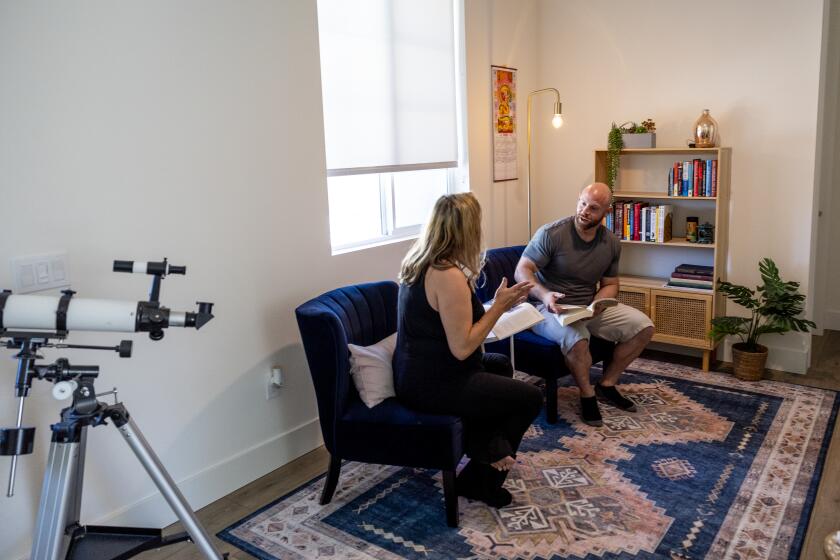Home prices are rising nearly everywhere. Not in Hollywood
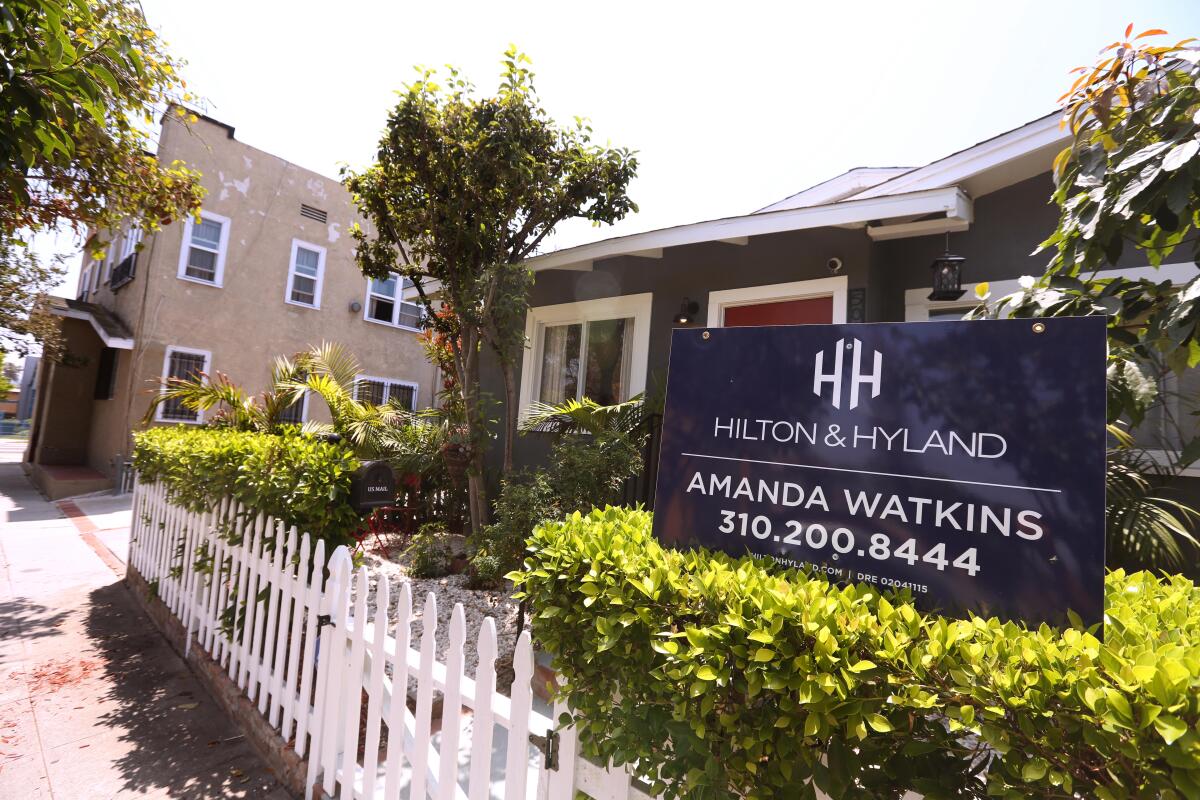
A few blocks from the corner of Western and Melrose, the 1920s bungalow on Lemon Grove Avenue had a certain charm. The original hardwood floors were well kept, the kitchen and bath updated for modern tastes.
For sale at $875,000, the Hollywood listing boasted that the house was featured in the 1970s classic film âChinatownâ and was minutes away from the studios. The worldâs most famous sign is visible from the dining room.
But despite being one of the cheaper options in the area, it drew no offers. In May, the seller cut the asking price by $50,000.
âSome people felt the neighborhood was an issue,â explained Bobby Duarte, the listing agent.
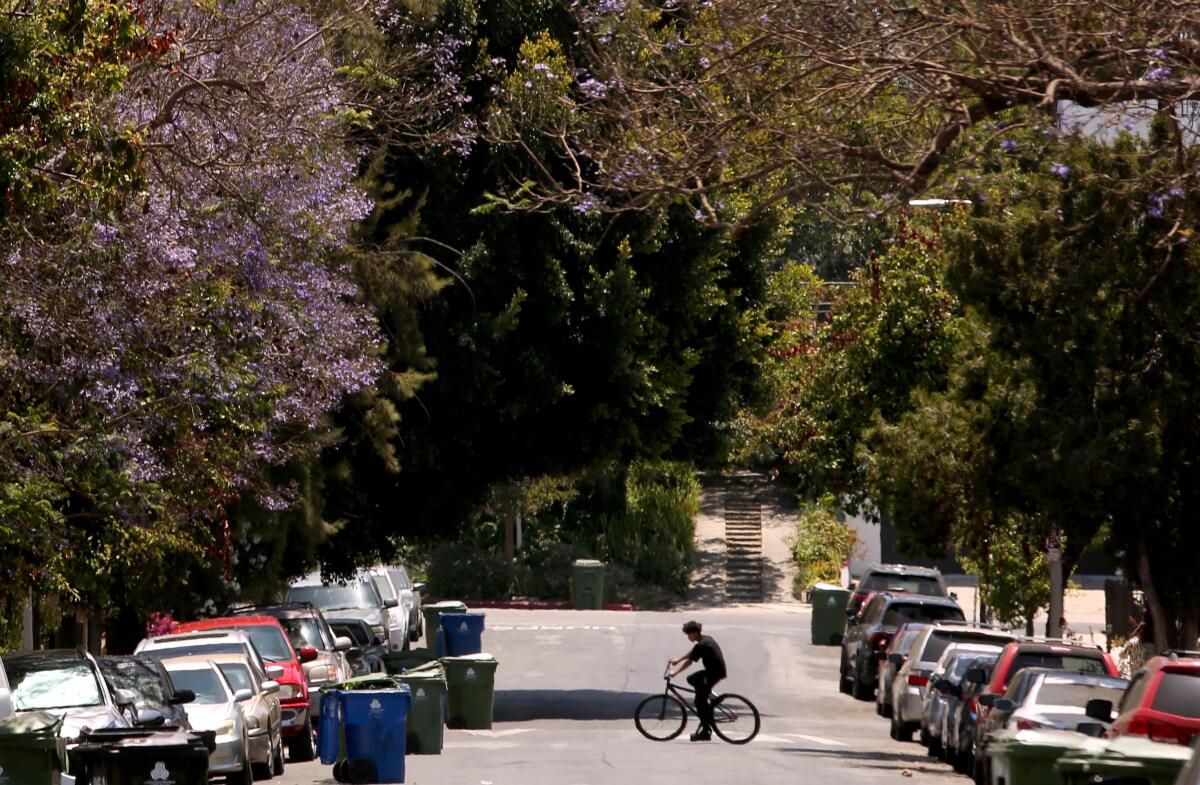
Across the city, county and state, home prices are on the rise. But in Hollywood and a handful of other central Los Angeles neighborhoods, the opposite is happening.
Home prices in Hollywood fell 3% in May compared with a year earlier and have now dropped on an annual basis every month since December 2022, according to data from Zillow.
At $994,522, the average Hollywood home price is 8% below the peak in the neighborhood.
Across the city of L.A., values are near a record and 6% higher than in May 2023. Countywide, prices are at an all-time high.
Explore the latest prices for homes and rentals in and around Los Angeles.
The Zillow definition of Hollywood does not include the Hollywood Hills, but largely stretches from La Brea Avenue east to Hoover Street, including the area often referred to as East Hollywood.
In the decade before the pandemic, the Hollywood area went through a wave of gentrification. New businesses and people moved in. Investors built new homes and renovated old ones. Housing costs soared.
Since then, thereâs been a shift. Businesses have closed and complaints over homeless encampments have risen.
The exact reason for the home price drop-off is unclear. But some real estate agents and residents pointed to the increased prevalence of homeless encampments, as well as a growing desire to escape crime and to have more living space than small bungalows and condos offer.
Other places experiencing price declines are the central L.A. neighborhoods of Arlington Heights, downtown and the area surrounding MacArthur Park, where apartment blocks are overcrowded and crime is high. Firefighters this month found a man lying face down, dead in the parkâs lake.
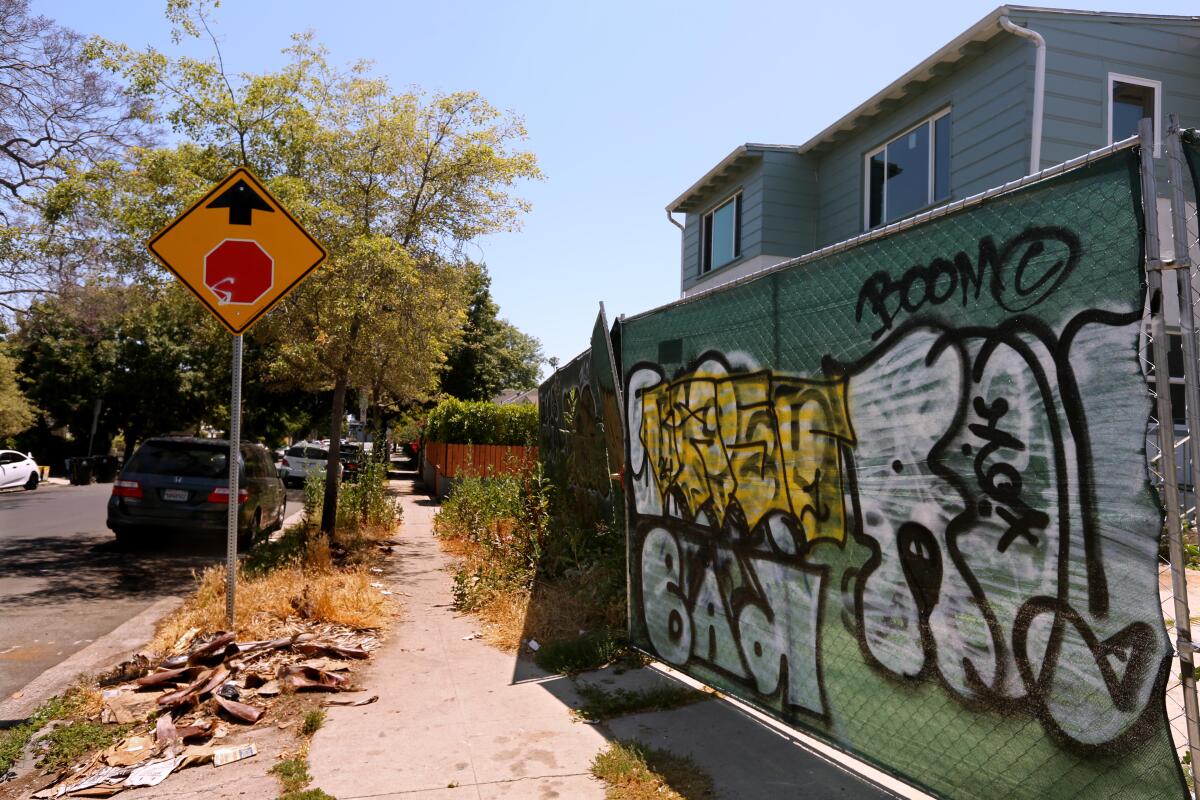
The largest home price increases are in the San Fernando Valley.
âUrban environments are wearing on people,â said local real estate agent Tracy Do. âPeople are looking for refuge.â
Duarte, the Hilton & Hyland agent with the Lemon Grove Avenue listing, said some people felt the nearby area wasnât that safe, but he didnât know why.
On a recent afternoon, the adjacent streets were quiet and mostly clean, except for one encampment about a quarter of a mile away.
At the Lemon Grove Recreation Center across from the house, children played soccer at the park and shot hoops. People walked dogs and lounged in the sun in peace.
Alex Weber, 39, lives nearby and said heâs never been the victim of a crime, but he noted that sex workers are a common sight on Western Avenue at night and heâs seen an increase in homeless encampments in the last few years.
Recently, a couple parked their old Hyundai Elantra on his street and left piles of garbage on it.
âThey were cool,â said Weber, who edits an organized labor publication. âBut I canât imagine it creates a good impression when you go in to see a unit that just hit the market and ... whatâs happening in front of you is an unpleasant scene of chaos and human desperation.â
Research consistently finds the high cost of housing to be a main driver of homelessness, with areas much poorer than Los Angeles â but with cheaper housing â having fewer people on the streets. That includes places such as Jackson, Miss., and Huntington, W.Va.
If homelessness is bringing down the cost of for-sale homes, it isnât making them affordable to the masses. Less than 14% of households in the county could afford Hollywoodâs average home price of nearly $1 million, and rent remains high as well.
Diana Huinac, 26, grew up across the street from Lemon Grove Recreation Center and still lives in the area.
âWe are making it barely,â the psychology student said. âThereâs just a lot of gentrification.â
The Los Angeles Homeless Services Authority does not currently break down how many people are living on the streets by community, citing concerns over accuracy. But previously, the agency saw homelessness in Hollywood as significant enough to single it out as one of three neighborhoods where it tried to quantify the problem.
Brittney Weissman, executive director of the nonprofit Hollywood 4WRD, said that although itâs difficult to track whether the total number of people living on the streets in the neighborhood has increased since 2020, her organization has noticed more homeless individuals with mental health issues and drug-induced psychosis.
âThat has amplified quite dramatically,â Weissman said, citing the availability of meth as one reason.
Corporations are building new suburban subdivisions to rent them out, changing how people live and build wealth in America.
Stuart Gabriel, director of the UCLA Ziman Center for Real Estate, said the pandemic increased the demand for housing in areas with more space that are considered safer, and the Zillow data indicate the trend remains in L.A.
The numbers also reflect the diminished role downtown plays in the regionâs economy, he said. With many offices there still empty, there are fewer people who need or want to live nearby.
Other economic factors could be at play as well. The entertainment industry took a major hit during the pandemic, and again during the strikes, and has yet to recover.
Petra Durnin, head of market analytics at Raise Commercial Real Estate, said 25.1% of the Hollywood office market was vacant in the second quarter, up from 5.9% at the end of 2019.
âItâs a painful adjustment period,â Durnin said.
A short walk from the Lemon Grove listing and across the street from other houses and apartments, a row of tarps and tents stretches across a sidewalk that abuts a wall next to the 101 Freeway.
Tonia Gibson recently visited a friend who lives in one of the makeshift structures. She said she used to live in the encampment as well and is now in subsidized housing.
She said that when she lived there, it felt safe, but she âwouldnât want to buy an apartment near an encampment.â
âIf I didnât know who stayed there ... I would fear for my safety at times,â Gibson said. âEspecially if itâs dark.â
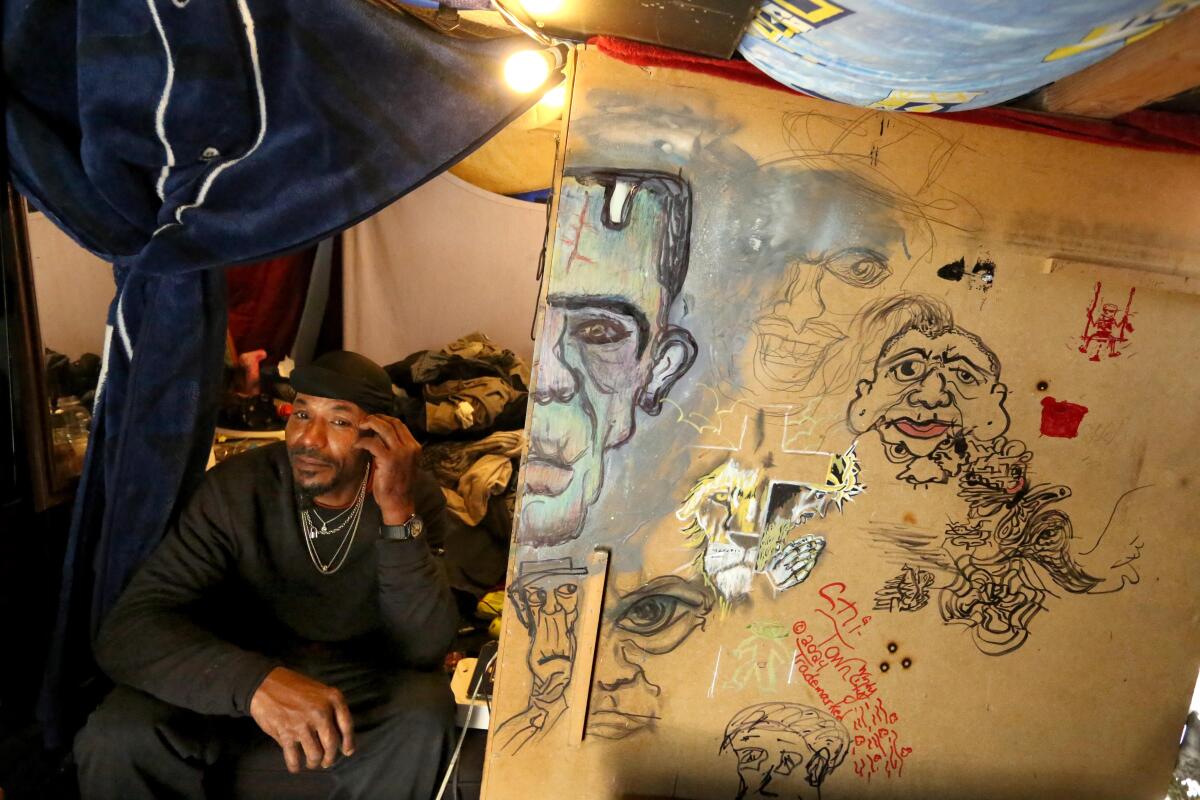
Jason Gamble spent part of the day in front of the tents and tarps, quietly sifting through items heâd found on the street, including a lamp. He lives in a plywood shelter nearby and said a heroin addiction pushed him onto the streets seven years ago. The 45-year-old said heâs kicked it, but now he uses crystal meth.
In other parts of Hollywood, housed residents have complained of fires that break out at encampments and said they donât feel safe walking through parts of their neighborhood.
Kathleen Rawson, president of the nonprofit Hollywood Partnership, which manages a business improvement district in Hollywoodâs commercial center, said the area is turning a corner. She said Mayor Karen Bassâ Inside Safe Program has made progress in getting people off the streets and the partnership is working on a plan to increase street cleaning and add more safety ambassadors.
âI am feeling very optimistic that Hollywood will look much cleaner and much brighter in the next year or so,â Rawson said.
Durnin said entertainment companies are also increasingly looking for office space in the neighborhood as production slowly ramps up. Tech companies are in the market as well.
âEven if half the companies that are looking actually do sign, we will be in a much better place,â Durnin said.
Some real estate agents attribute the price decline not to tents but to simple math.
In the last decade, many developers bought and demolished single family houses in Hollywood to build small lot subdivisions or apartments.
In the back half of 2022, interest rates surged and stayed high. That has raised the cost of development and reduced the amount builders can pay for a house.
Thereâs âa lot less investor money being deployed,â said Dan Sanchez, a real estate agent with Engel & Volkers. âI donât see the impact of homelessness.â
On Lemon Grove Avenue, the seller of the remodeled 1920s house had luck after reducing the $875,000 asking price to $825,000. Duarte said the house is now in escrow but declined to disclose the amount.
Back at the encampment next to the 101, Alvin Young sat in a structure he built with wood and blue tarp. There was a couch, TV and bed sandwiched into a small space that doesnât allow him to stand.
Young said that he became homeless after he and his wife split up and that people have burned down previous structures he built for shelter. He said he gets by on recycling and odd construction jobs and wants off the streets.
âI donât want to be here,â the 49-year-old said. âI want a house of my own. I want to remodel a house.â
Times staff writer Doug Smith contributed to this report.
More to Read
Sign up for This Evening's Big Stories
Catch up on the day with the 7 biggest L.A. Times stories in your inbox every weekday evening.
You may occasionally receive promotional content from the Los Angeles Times.

